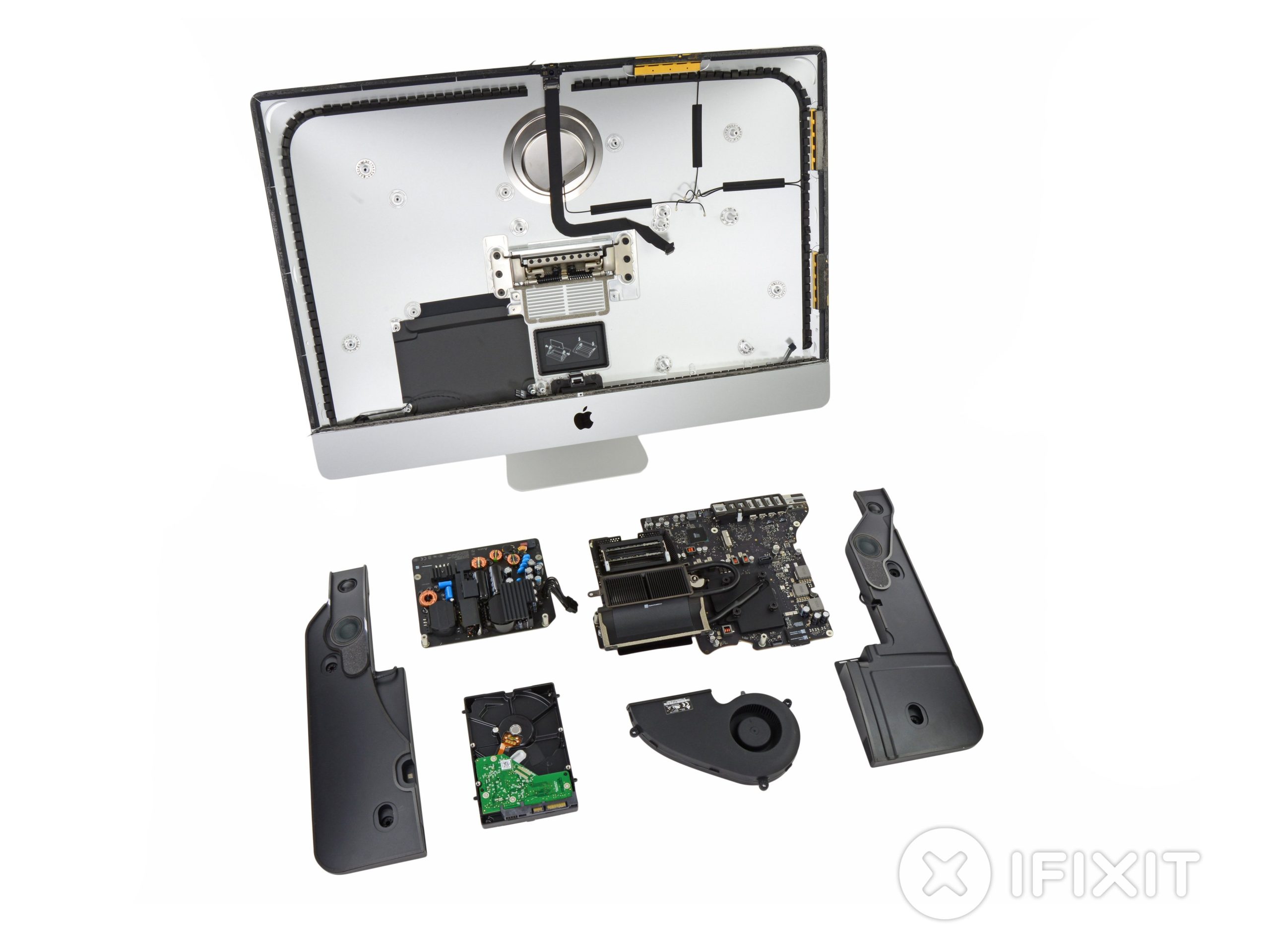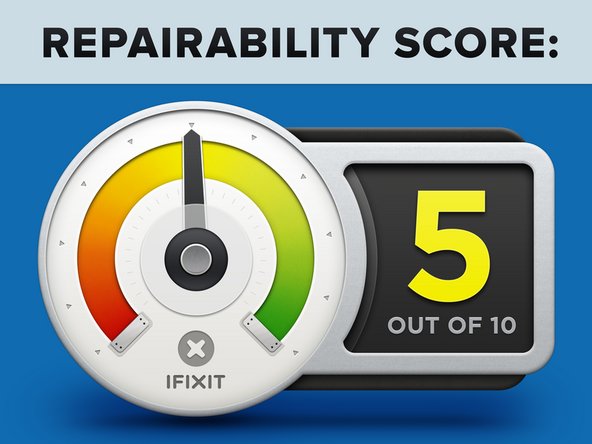iMac Intel 27″ EMC 2639 Teardown
Duration: 45 minutes
Steps: 8 Steps
Apple quietly rolled out some new iMacs, but we’re not letting them off the hook that easily. We’re cracking open the next-generation 27″ iMac for a guided look at what’s inside. If the 21.5″ model is more your speed, we’ve pulled that one apart too—check out its teardown for the details. Ready for a step-by-step adventure? Let’s dive in and see what makes this sleek machine tick.
Step 1
– Externally, the iMac Intel 27″ EMC 2639 looks just like the previous model, but inside, it’s got some serious upgrades: a 3.2GHz quad-core Intel Core i5 processor (Turbo Boosts up to 3.6GHz) with 6MB L3 cache, an NVIDIA GeForce GT 755M graphics card with 1GB of GDDR5 memory, support for 802.11ac Wi-Fi, and a PCIe flash SSD option. Ready to dive in? Follow along step-by-step to explore these features and get the most out of your iMac. If you need help, you can always schedule a repair.
Step 2
– A few quick slices with our trusty iMac Opening Tool and we’re in! It’s like déjà vu, but in the best way possible.
Step 3
– The AirPort/Bluetooth card, which follows the 802.11ac Wi-Fi standard, is still tucked behind the logic board — so swapping it out is just as tricky as before.
– Chips off the old new block:
– This isn’t the first Mac to get the updated ac standard, so we expected to see some familiar parts, like the ones in the refreshed MacBook Airs earlier this year.
– Broadcom BCM4360KML1G 5G WiFi 3-Stream 802.11ac Gigabit Transceiver—yep, this is the same chip powering the ac Wi-Fi in the 11″ and 13″ MacBook Air.
– Skyworks SE5516 Dual-Band 802.11a/b/g/n/ac WLAN Front-End Module.
– Broadcom BCM20702 Single-Chip Bluetooth 4.0 HCI Solution with Bluetooth Low Energy (BLE) Support.
Step 4
The Fusion Drive pairs up a big hard drive with fast flash storage to give your Mac faster boots and quicker access to apps and files—making your system run smoother and more efficiently. If you’re feeling stuck or need a hand, you can always schedule a repair.
– Just like the latest iMacs, the 27″ model now supports PCIe-based flash storage—pretty cool upgrade from last year’s 21.5″ version, which had some unpopulated solder pads on the logic board. Apple says this new storage is up to 50% faster than previous generations, making your computing snappier and more responsive. If you need a hand with any steps, remember you can always schedule a repair.
Step 5
Apple’s iMac update for the 21.5″ model came with a surprise twist: they went ahead and soldered the CPU. Yep, it’s locked in place, which definitely raised our eyebrows.
– Luckily, the 27″ model avoided the same mishap, so power users can still upgrade their processor without needing a reflow oven.
Step 6
– Heavy-duty ICs: Yep, the iMac 27″ now comes with a sleek new graphics processor.
– Check out the 3.2GHz quad-core Intel Core i5 processor—it’s the powerhouse under the hood.
– The Intel platform controller hub is in charge of keeping everything running smoothly.
– The NVIDIA GeForce GT 755M GPU is your graphics sidekick for sharp visuals.
– And don’t forget the four SK hynix H5GQ2H24AFR 256 MB GDDR5 SGRAM ICs, which make up the 1 GB of graphics RAM—because who doesn’t love more memory?
Step 7
– Check out the B-side lineup of our IC record:
– NXP ARM7TDMI-S microcontroller is running the show.
– Analog Devices SSM3302 is handling the audio amplification duties.
– Cirrus Logic 4206BCNZ is the audio controller—same one found in last year’s 21.5″ model.
– Vimicro VC0359 is the brains behind the webcam.
– Broadcom BCM57765A1KMLG takes care of gigabit ethernet and comes with a built-in SDXC card reader.
– Intel DSL3510L Cactus Ridge is in charge of Thunderbolt connections.
Step 8
– iMac 27″ EMC 2639 Repairability Score: 5 out of 10 (10 is easiest to repair)
– Good news! The RAM is easy to swap out without opening the case, thanks to the rear access door.
– Replacing the hard drive and CPU is possible, though you’ll need to do a bit of cutting through some sticky adhesive.
– Most of the components are modular and are pretty straightforward to remove.
– Budget-conscious users can now add a second hard drive to the base iMac, as the Fusion Drive connector is now present on the logic board.
– Heads up: the glass and LCD are fused together, and there’s no longer a set of magnets holding the glass in place.
– To reseal the iMac back to its original condition, you’ll need to carefully peel off the old sticky tape and replace it with fresh tape.
Success!















